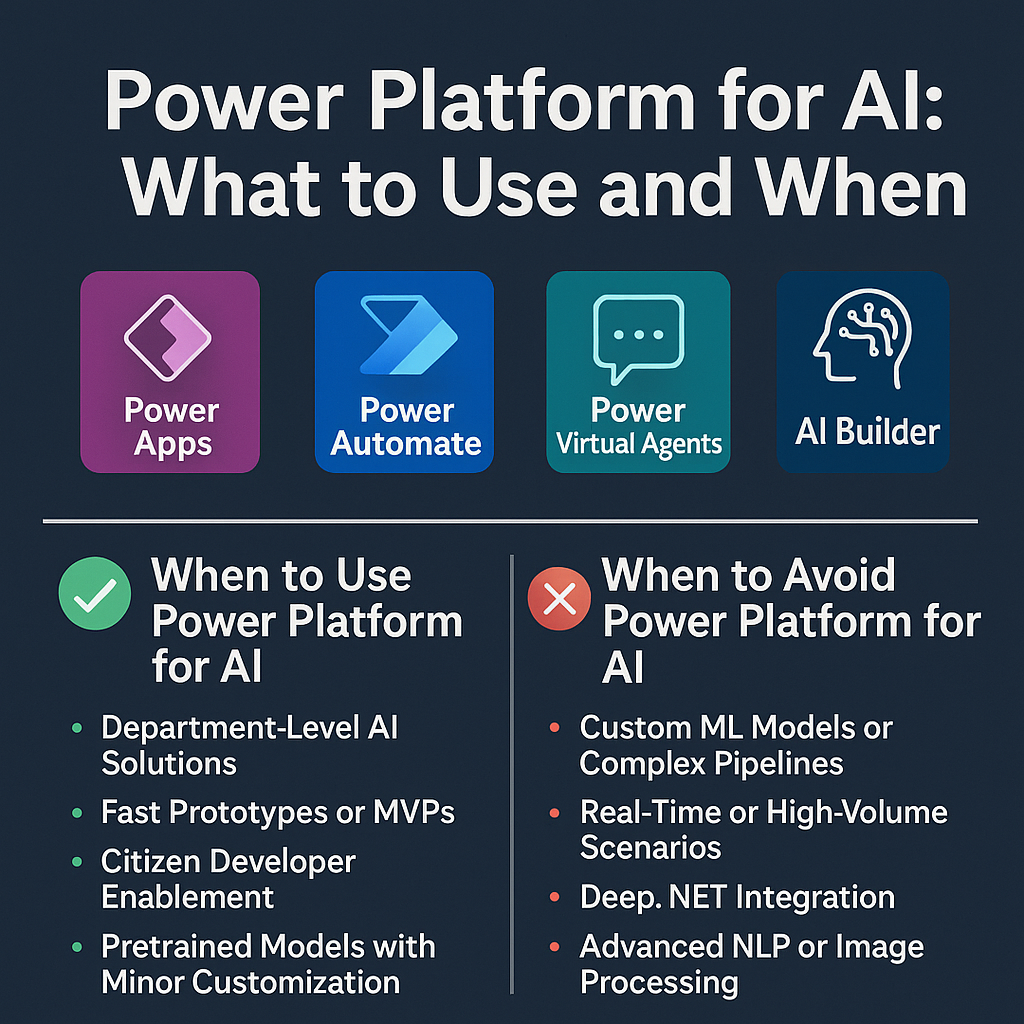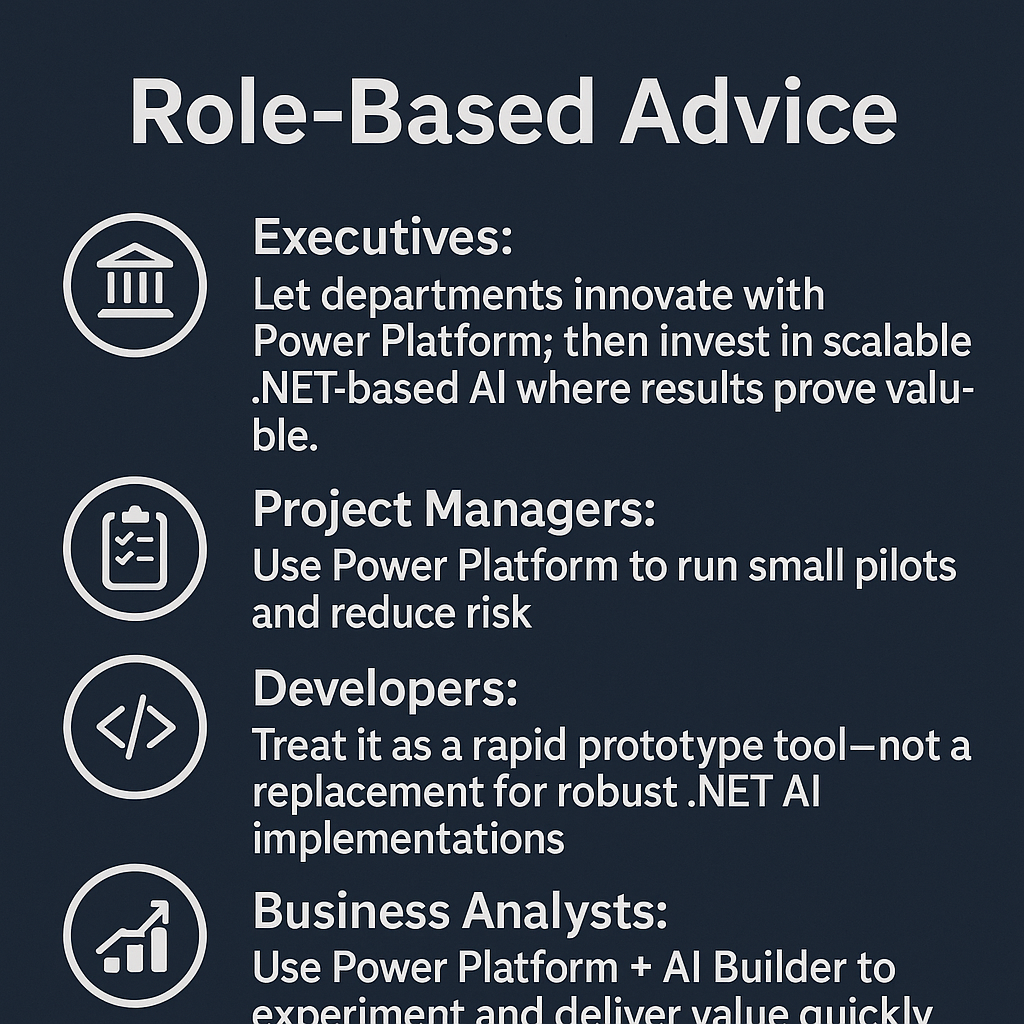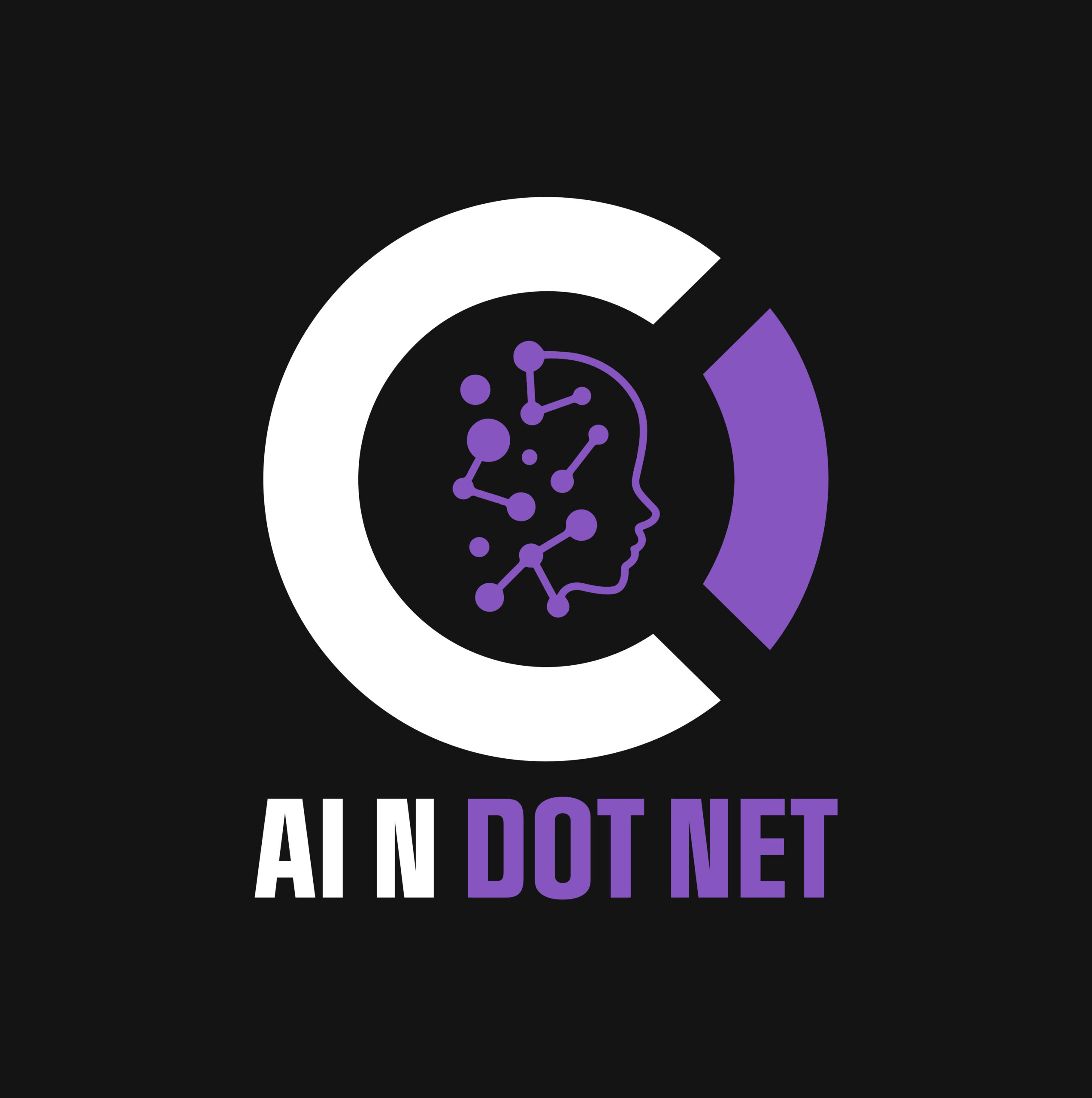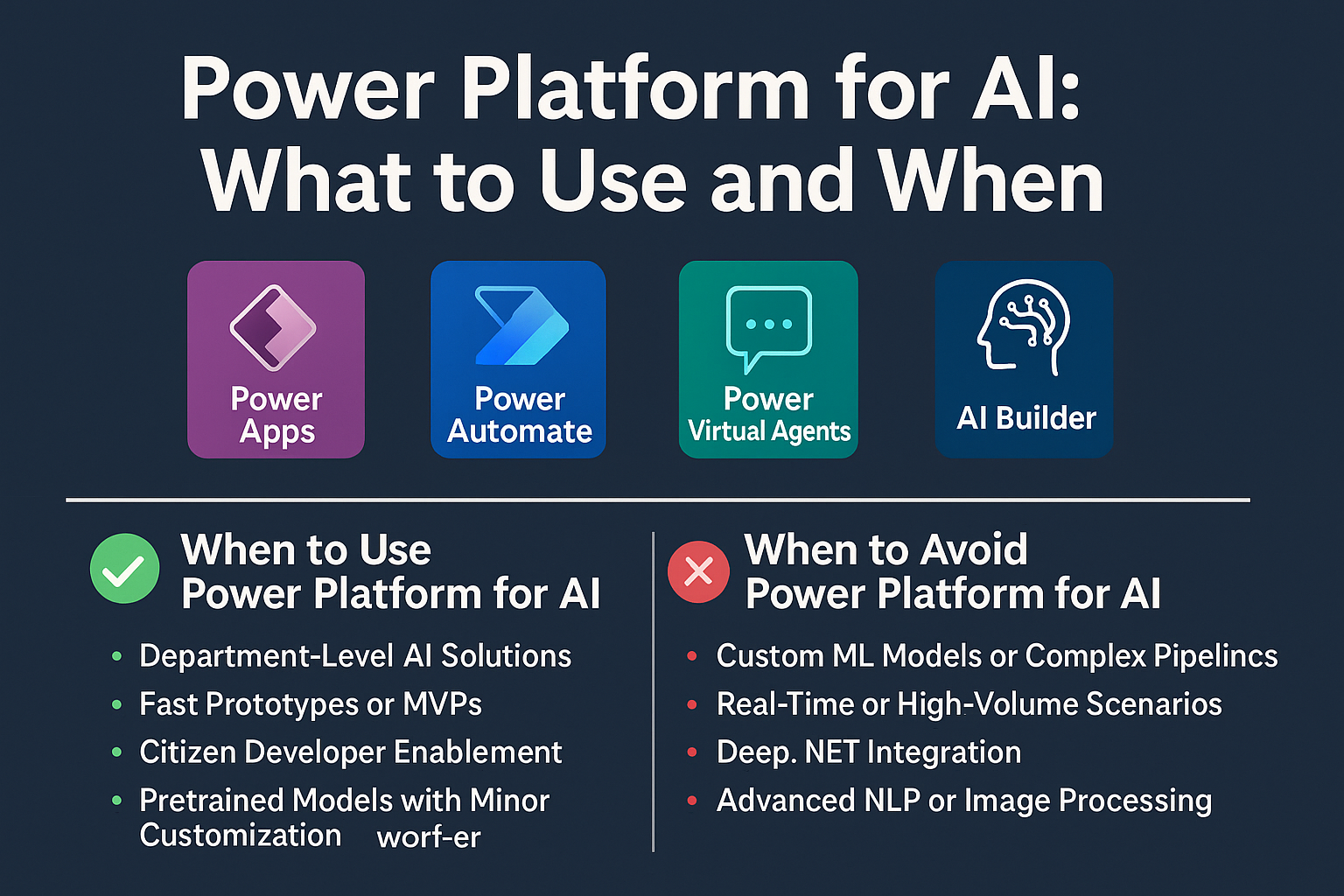If you’re trying to bring AI into your business without hiring a PhD team or launching a full-blown dev project, the Microsoft Power Platform might look like the answer. And it can be—when used the right way.
This guide lays out when to use Power Platform for AI, when to step back and use .NET or Azure AI instead, and how to empower your team to experiment without getting stuck.
What Is the Power Platform?
The Power Platform is Microsoft’s low-code suite for building business applications and automations:
- Power Apps – Create low-code internal apps
- Power Automate – Build automated workflows
- Power BI – Analyze and visualize data (not our focus today)
- Power Virtual Agents – Design conversational bots
- AI Builder – Add AI features with no-code tools
All of it sits on top of Microsoft Dataverse, integrates with hundreds of connectors, and allows limited custom API usage.
It’s incredibly powerful—especially for business analysts and departmental users—but it’s not a silver bullet for every AI problem.
When to Use Power Platform for AI
✅ Perfect Use Cases
1. Department-Level AI Projects
Need to classify forms in HR? Automatically tag support tickets in IT? The Power Platform can handle these cases with ease.
2. Quick Prototypes or MVPs
You can test AI’s value in a department with minimal investment—no full dev cycles or long approvals.
3. Citizen Developer Enablement
Power Platform gives non-developers the ability to explore AI using visual tools. It unlocks innovation outside the dev team.
4. Built-In AI Models
AI Builder provides pre-trained models for:
- Sentiment analysis
- Form processing
- Prediction
- Object detection
- Category classification
5. Embedding AI into Workflows
Power Automate can call AI models to score sentiment, summarize text, or extract key data—without writing custom code.
When Not to Use Power Platform for AI
❌ Situations Where It Falls Short

1. Complex or Custom AI Logic
Need to train a unique model on proprietary data? Use ML.NET, Azure AI, or Cognitive Services instead.
2. High-Volume or Real-Time Systems
Power Platform isn’t optimized for low-latency, high-throughput, or concurrent processes.
3. Enterprise-Level .NET Integration
Complex business logic, multi-system orchestration, or deep .NET SDK usage? Skip Power Platform and go native.
4. Advanced AI Capabilities
Natural language generation (e.g., GPT), image analysis at scale, or conversational memory? Power Platform can’t keep up—go to Azure OpenAI or Azure Cognitive Services
The Power Platform Is Like Excel, Access and Infopath
Think of Power Platform like Microsoft Excel, Access and Infopath — brilliant for lightweight tools and fast answers, but not what you’d build your ERP system in.
Eventually, you’ll hit bottlenecks:
- No source control
- No versioning
- Limited debugging and logging
- No Devops
- Scalability issues
- Friction with IT governance
- Applications with a lot of data or complex data
- Usually just one or two users
Even if your team is full of great developers, Power Platform is still a great place to start with AI—just not where you want to finish.
Smart Strategy: Learn AI with Power Platform First
At AInDotNet, we recommend:
- Let your devs and analysts experiment with Power Platform and AI Builder
- Use it to explore ideas, prove business value, and get feedback
- Once the use case is proven, transition to .NET, ML.NET, or Azure AI for scalability and customization
Don’t train your team with a hammer and chisel—let them use a toolkit. Power Platform is the toolkit.
Use Case Comparison: What to Use and When
| Use Case | Use Power Platform? | Use .NET or Azure AI? |
|---|---|---|
| Classify support tickets in IT | ✅ Yes | ❌ No |
| Build a forecasting model on proprietary ops data | ❌ No | ✅ Yes |
| Automate invoice processing | ✅ Yes | ⚠️ Maybe, depends on scale |
| Real-time fraud detection | ❌ No | ✅ Yes |
| Empower business analysts to experiment with AI | ✅ Yes | ⚠️ Later transition |
Role-Based Advice

- Executives: Let departments innovate with Power Platform; then invest in scalable .NET-based AI where results prove valuable.
- Project Managers: Use Power Platform to run small pilots and reduce risk.
- Developers: Treat it as a rapid prototype tool—not a replacement for robust .NET AI implementations.
- Business Analysts: Use Power Platform + AI Builder to experiment and deliver value quickly.
Final Thoughts
Power Platform is not the destination—it’s the on-ramp. It’s perfect for small apps, department tools, and early AI experiments.
But when you’re building systems that need to scale, integrate deeply, or offer competitive advantage, shift your team to ML.NET, Azure Cognitive Services, or Azure OpenAI—and build it right.
The best AI tools aren’t just about what they can do. They’re about what you should use—when it really matters.
Stay tuned for our upcoming article: “Microsoft Copilot: A Unified Front Door to AI”—where we explore how Copilot ties into Power Platform, M365, Azure AI, and more.
Want to stay ahead in applied AI?
📑 Access Free AI Resources:
- Download our free AI whitepapers to explore cutting-edge AI applications in business.
- Check out our free AI infographics for quick, digestible AI insights.
- Explore our books on AI and .NET to dive deeper into AI-driven development.
- Stay informed by signing up for our free weekly newsletter

